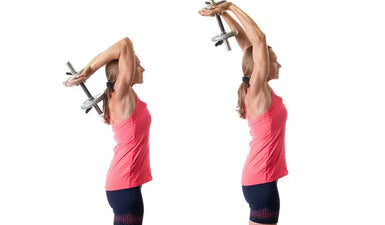Thinking about how rebounding can help with diabetes? It might sound a bit out there, like something just for kids, but hear me out. This simple bouncing on a mini trampoline has some serious science behind it, and it's not just about fun. It turns out, this low-impact activity can do a lot for your body, especially if you're managing diabetes. We're talking about boosting your heart health, helping your body clear out waste, and even giving your metabolism a good kickstart. Plus, it's super easy to fit into your day. Let's jump into how this 'rebounding Rx' can be a game-changer for your diabetes health.
Key Takeaways
- Rebounding, a low-impact exercise, has been shown to increase heart rate and oxygen consumption more effectively than running, according to NASA studies.
- The bouncing motion strengthens every cell in your body by subjecting it to G-forces, which can improve cardiovascular function and circulation.
- Rebounding stimulates the lymphatic system, aiding in the removal of toxins and supporting immune function, which is important for overall health and managing conditions like diabetes.
- It's a convenient and versatile exercise that can be done at home, adaptable to different fitness levels, and gentle on joints.
- This activity can help jumpstart your metabolism, potentially assist with weight management, and promote better digestive health, all beneficial for diabetes management.
Understanding Rebounding's Impact on Diabetes
It might sound a little out there, but that mini trampoline you might have had as a kid could actually be a game-changer for managing diabetes. We're talking about rebounding, and it's more than just a fun way to bounce around. Decades ago, NASA did some research that really opened eyes about how effective this low-impact exercise is. They found that rebounding could actually be more beneficial than running in some ways, especially when it comes to getting your heart rate up and improving oxygen use. For folks dealing with diabetes, this is big news because it offers a way to get a good workout without putting a ton of stress on your joints. This makes trampoline exercise for blood sugar control a really interesting option.
NASA's Groundbreaking Study on Rebounding
Back in the early 1980s, NASA scientists looked into what rebounding could do. They had people walk, jog, and run on a treadmill and then compare that to bouncing on a mini trampoline. The results were pretty surprising. Rebounding not only proved to be safe and easy on the body, even for those with physical limitations, but it also boosted heart rate and oxygen consumption more than running did. This study really highlighted the potential of mini trampoline health benefits diabetes management.
The Science Behind Cellular Strength
So, what's happening at a cellular level when you rebound? It's pretty neat. As you bounce, your body experiences periods of zero gravity at the top of the bounce and then increased gravitational forces on the way down. This cycle of acceleration and deceleration is thought to strengthen every cell in your body. It's like giving your cells a workout, making them more resilient. This cellular strengthening is a key part of why rebounding workout diabetes management can be so effective.
Low-Impact, High-Intensity Benefits
One of the best things about rebounding is that it's a low impact exercise for diabetics. Unlike high-impact activities like running or jumping on a hard surface, the springs on a rebounder absorb most of the shock. This means you can get your heart pumping and work your muscles without the usual wear and tear on your knees, ankles, and hips. Yet, despite being gentle, it can still provide a high-intensity workout, leading to better cardiovascular health and potentially improving insulin sensitivity with rebounding.
Rebounding for Enhanced Cardiovascular Health
When it comes to your heart, getting it pumping is key, and rebounding offers a surprisingly effective way to do just that. It’s not just about jumping up and down; it’s about giving your cardiovascular system a real workout without putting a ton of stress on your joints. Think of it as a gentle yet powerful way to boost your heart health.
Boosting Heart Rate and Oxygen Consumption
Jumping on a mini trampoline is a fantastic way to get your heart rate up. Studies, including one from NASA way back in 1980, showed that rebounding can actually increase heart rate and oxygen consumption more than activities like running. This means your body is working harder, in a good way, to get oxygenated blood where it needs to go. It’s a simple exercise that really makes your heart work efficiently. This can be a game-changer for managing conditions like type 2 diabetes, as regular aerobic exercise is known to help improve insulin resistance.
Improving Blood Flow and Circulation
As your heart rate increases, so does your blood flow. Rebounding helps to move blood more effectively throughout your body. This improved circulation means that more oxygen and nutrients are delivered to your cells, and waste products are carried away more efficiently. Better circulation is important for overall health, helping everything from your muscles to your brain function at their best. It’s like giving your entire circulatory system a tune-up.
Strengthening the Cardiovascular System
Consistent rebounding sessions can lead to a stronger, more resilient cardiovascular system. Your heart is a muscle, and like any muscle, it gets stronger with regular exercise. By challenging your heart and lungs repeatedly, you build endurance and capacity. This makes your heart more efficient at pumping blood, which can lead to lower resting heart rates and improved blood pressure over time. It’s a low-impact method that builds serious stamina.
Rebounding provides a unique form of resistance training for your cells. The acceleration and deceleration experienced during each bounce help to strengthen every cell in your body, contributing to overall physical resilience and improved bodily functions.
Here’s a quick look at what happens during a rebounding session:
- Increased Heart Rate: Your pulse quickens, signaling your heart to work harder.
- Higher Oxygen Uptake: Your body takes in more oxygen to fuel your muscles.
- Improved Blood Velocity: Blood circulates faster, delivering vital nutrients.
- Enhanced Lymphatic Flow: This aids in removing waste products from your body.
Detoxification and Lymphatic System Support
Our bodies are constantly working to get rid of waste and toxins. Sometimes, though, this natural process can get a bit bogged down. That's where rebounding really shines. It's not just about getting your heart rate up; it's about helping your body's internal cleanup crew do its job more effectively.
Stimulating Lymphatic Drainage
The lymphatic system is like the body's drainage system. It's a network of vessels that carries lymph fluid, which helps remove waste products from our cells. Unlike our circulatory system, the lymphatic system doesn't have a pump. It relies on muscle movement to keep things flowing. Rebounding provides that movement. The up-and-down motion, even at a gentle pace, helps to push lymph fluid through the vessels. This gentle, rhythmic action is key to preventing fluid buildup and keeping the system clear.
Facilitating Toxin Elimination
When the lymphatic system is moving well, it can more efficiently transport toxins to be eliminated from the body. Rebounding also encourages sweating. While sweating is primarily for temperature regulation, it's also a way our bodies get rid of certain waste products and environmental toxins. Think of it as a double-duty detox: improved lymph flow and increased sweating work together to help clear things out.
The simple act of bouncing on a rebounder can significantly aid your body's natural detoxification processes. It's a low-impact way to get your internal systems working more efficiently, helping to flush out waste and support overall health.
Supporting Immune System Function
Your lymphatic system is also a big part of your immune system. It houses white blood cells, which fight off infections. By stimulating lymphatic drainage, rebounding can help increase the circulation of these important immune cells. A well-functioning lymphatic system means your immune defenses are better positioned to do their job. It's a pretty neat connection, really.
Here's a quick look at how rebounding helps:
- Lymphatic Flow: The G-force changes during bouncing help move lymph fluid.
- Toxin Release: Sweating during exercise aids in expelling waste.
- Immune Cell Circulation: Better lymph movement means better distribution of white blood cells.
Convenience and Versatility of Rebounding
Home-Based Exercise Accessibility
Forget about needing a gym membership or special equipment that takes up half your living room. A rebounder, or mini-trampoline, is surprisingly compact. Many models even fold up, making them easy to store or even take with you if you travel. This means you can get a solid workout in whenever and wherever you want, whether it's in your living room while watching your favorite show or on a hotel room floor. It truly brings the fitness studio right to your doorstep.
Adaptable to Various Fitness Levels
One of the best things about rebounding is that it's not just for super-fit athletes. Whether you're just starting out or you've been exercising for years, you can tailor the intensity. You can do gentle bounces, jog in place, or even add some arm movements. For those looking for more, you can incorporate weights or try more complex jumps. It's a flexible exercise that grows with you.
Here's a quick look at how you can adjust the intensity:
| Intensity Level | Suggested Movements |
|---|---|
| Beginner | Gentle bouncing, marching in place, small arm circles |
| Intermediate | Jogging in place, basic jumps, torso twists |
| Advanced | High-intensity jumps, jumping jacks, adding light weights |
Integrating with Other Training Methods
Rebounding isn't just a standalone activity; it plays nicely with other forms of exercise. You can use it as a warm-up before a run or strength training session. It's also fantastic for active recovery days, giving your muscles a break while still keeping your heart rate up. Plus, combining rebounding with high-intensity interval training (HIIT) can really boost your calorie burn and cardiovascular benefits. Think of it as a versatile tool in your fitness toolbox.
The beauty of rebounding lies in its simplicity and adaptability. It doesn't demand a huge time commitment or complicated routines. You can easily fit short, effective sessions into a busy schedule, making consistent exercise more achievable than ever.
Rebounding's Role in Metabolic Balance
When you think about managing diabetes, you probably focus on diet and maybe some traditional exercises. But what if I told you that bouncing on a mini trampoline could actually help get your metabolism humming?
Jumpstarting Metabolism
Rebounding is a fantastic way to kickstart your metabolism. The up-and-down motion works against gravity, and this constant change in G-force actually strengthens every single cell in your body. Think of it like giving your cells a mini workout every time you bounce. This cellular strengthening can lead to a more efficient metabolism overall. It's like waking up your body's engine.
Potential for Weight Management
Let's be real, weight management is a big piece of the diabetes puzzle for many people. Rebounding can be a real game-changer here. Because it's a low-impact exercise, it's easier to do for longer periods, which means you can burn more calories without putting a ton of stress on your joints. Plus, by boosting your metabolism, you're helping your body burn calories more effectively even after you're done bouncing. It's not just about the workout itself; it's about how it changes your body's internal processes.
Here's a quick look at how rebounding can help:
- Increases calorie burn during exercise.
- Boosts resting metabolic rate.
- Supports lean muscle development.
Promoting Digestive Health
This might sound a little surprising, but rebounding can also do wonders for your digestive system. The gentle bouncing action helps to stimulate the movement of your intestines. This can help with things like constipation and bloating, making your digestive system run more smoothly. A well-functioning digestive system is key for absorbing nutrients properly, which is super important when you're managing blood sugar levels. It's all connected, right?
A healthy digestive system means your body can better process the food you eat, turning it into energy instead of storing it as excess. This improved efficiency can play a role in keeping your blood sugar more stable throughout the day.
Safety and Accessibility for All
Gentle on Joints and Body
One of the best things about rebounding is how easy it is on your body. Unlike running or jumping on hard surfaces, the mini-trampoline absorbs a lot of the impact. This means you get a great workout without putting a ton of stress on your knees, ankles, and hips. This low-impact nature makes it a fantastic option for people who might find other exercises too tough on their joints. It's a way to get your heart rate up and build strength without the usual aches and pains that can come with exercise. Think of it as a bouncy, fun way to move that's kind to your body.
Options for Enhanced Stability
If you're new to rebounding or just want a little extra support, there are ways to make it even more stable. Many mini-trampolines come with a handlebar, which is super helpful for balance. You can hold onto it while you bounce, giving you confidence and control. This is especially good if you're just starting out or if you have any concerns about stability. It allows you to ease into the exercise at your own pace, focusing on the movement rather than worrying about losing your balance. It really opens up the possibility for more people to give it a try.
Suitable for Diverse Age Groups
Rebounding isn't just for one type of person or age group. It's really quite versatile. Kids love it, of course, but it's also great for adults and seniors. The intensity can be adjusted easily. You can do gentle bounces or more vigorous jumps. This adaptability means that people of different ages and fitness levels can use the same equipment and get a good workout. It's a way to stay active and healthy that can grow with you, no matter your age.
The key is finding the right rebounder for your needs and starting slowly. Listen to your body, and don't be afraid to use the stability features if you need them. It's all about making exercise accessible and enjoyable for everyone.
We believe everyone should be able to enjoy fitness safely. Our trampolines are designed with all users in mind, making exercise fun and accessible. Want to learn more about how we ensure safety and accessibility for every jumper? Visit our website today!
Keep Bouncing Forward
So, we've talked a lot about how bouncing on a mini trampoline, or rebounding, can really help with your diabetes health. It's not just some fad; NASA even did studies on it way back when. It's easy on your joints, which is a big deal, and it gets your heart pumping and your body moving toxins out. Plus, you can do it right at home, even while watching TV. It's a simple way to get a good workout, boost your immune system, and just feel better overall. Don't forget, it's about building habits that last, not just a quick fix. So, grab a rebounder if you can, or even just do some small bounces, and keep that momentum going. Your body will thank you for it.
Frequently Asked Questions
What exactly is rebounding and how does it help my body?
Rebounding is basically bouncing on a mini-trampoline. It's a great way to get your body moving because it works every single cell. When you bounce, you go through times of feeling weightless and then stronger gravity. This helps make your cells tougher and stronger, like giving them a workout too!
Is rebounding good for my heart and breathing?
Yes, it really is! Rebounding gets your heart pumping faster and makes you breathe more deeply, which is fantastic for your heart and lungs. Studies, even one by NASA, showed that rebounding can boost your heart rate and how much oxygen your body uses more than running does, all while being gentler on your body.
How does rebounding help clear out bad stuff from my body?
Rebounding is awesome for your lymphatic system, which is like your body's cleanup crew. Bouncing helps this system move fluid around, which carries away waste and toxins from your cells. This can help your body get rid of unwanted stuff and keep your immune system strong.
Can anyone do rebounding, or is it too hard?
The cool thing about rebounding is that almost anyone can do it! It's very gentle on your joints, like your knees and ankles, because the trampoline absorbs most of the impact. You can adjust how high or fast you bounce to match your fitness level, and some rebounders even have handles for extra safety.
Will rebounding help me manage my weight?
Rebounding can definitely help with weight management. It speeds up your metabolism, which means your body burns more calories even after you stop exercising. Plus, when you combine it with other exercises like HIIT, it can be a really effective way to burn calories and support your weight loss goals.
How often should I rebound to see benefits?
You don't need to spend hours on the rebounder. Even short sessions, like 15-20 minutes a day, can make a big difference. Consistency is key! Doing it regularly helps your body get used to the movement and allows you to experience all the benefits for your heart, lymph system, and overall health.

























0 comments